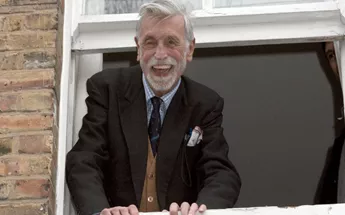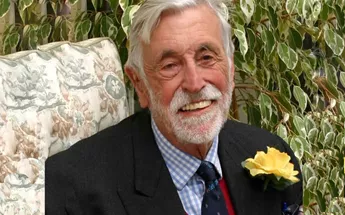Travelling home
When I was posted home in 1953 I was told I could make my own way. I was in Malta at the time and instead of catching a boat and going back to Gibraltar, I would go by night to Syracuse in Sicily and then make my way home slowly by train stopping where I wanted in Italy and France. I went as a tramp, not shaving, sleeping where I could, eating scraps bought from greengrocers shops and washing at public water taps. The sea served as a bath occasionally but at smart places like Gracie Fields’ swimming pool in Capri, I was able to have a good shower with soap as well. I was asked what yacht I had arrived in, and when I asked why it was thought I had come in a yacht at all, the reply was, “well you’ve got a beard, so we thought you must be a sailor”.
I slept in a beach hut, a warehouse, a monastery, a railway waiting room, a borrowed tent and a brothel. The later had the advantage that nobody wanted to get up in the morning, and whilst everybody slept late I was able to creep out with the minimum of fuss.
At the end of my Italian travels I visited the “Little House of Divine Providence” in Turin. It made a deep impression. Run by an order of sisters in a Christian atmosphere it was a home, or really a small town, where eight thousand people, either old or handicapped (mentally or physically) adults and orphans lived. I walked around the wards and dormitories, the living rooms and chapel. I saw the aged lying in their beds and saw all sorts of behaviour. In England we were trying to care for those people within the welfare state, but I began to think that there might be some left out. I wondered what happened to them?
Reflections on the Abbeyfield model
Many old people have a rooted objection to life in a “home”. This is partly a hangover for they remember the bad old days. No matter how cheerful and cosy, the “home” is not a home. Once in, it is not easy to get out. It does not provide the kind of life which many old people want. What they would like is to stay in the area they know about, to go on living the life they lived before, to have their own possessions and their own friends, and to have people of all ages around them. Material needs are less important. Whatever the comforts of a “home” it is in effect putting the old people away on a shelf when they desperately want to stay on the floor.
Abbeyfield gives them just this. They are still responsible and visible members of the community. As well as this they have the care of a housekeeper and those who come to help in the house. They have no chance to be lonely – poor dears, they get little chance of peace! There are the monthly singalongs, communal outings and they can drop in on one another for a gossip and some tea. They can be as sociable as they choose.
Many have taken on a new lease of life, and this is really no exaggeration, and live in an atmosphere where they found themselves to their surprise and joy, loved and wanted.
The first Abbeyfield newsletter
April ‘56
The background
All over England but especially in the residential working-class areas of London, there live men and women who are old and lonely. This we know is no new observation but nevertheless we have just been brought face to face with it. Many old people are physically handicapped, many can scarcely go outdoors. Many have no partner, no family, no friends to help them, and many have family and friends who fail to live up to their obligations and who leave them to fend for themselves.
The object
Is two-fold: one is to provide for lonely old age pensioners or handicapped people, a new home life in which they can have the care and companionship which they have been denied, and the second is to provide and nurture the means by which neighbours and relations can exercise their duty towards them.
We will carry out these objects through the medium of ordinary houses in ordinary streets, in which the old people can each have a room, furnished by themselves and which becomes for them, their own home completely. But that is only the material side: the essential human side must also be taken care of by the relations and neighbours. To our mind, their participation is essential to the complete working and happiness of a house. Each old person will feel that they have returned to the community and are no longer separated from it. Each of them has been ‘adopted’ by a neighbour who cleans their room once a week and other help when wanted, cooking, message carrying and other odd jobs.
The present
The first house has opened at 50 Eugenia Road, just before Christmas 1955. It rises straight from the pavement, nor at there any gardens at the back. The rooms are small but light. Through subsidence, everything, the walls, the stairs, the floors are on a slant, but a combination of wood, paper and plasticine blocks the draughts. In one of the rooms is a piano which no one in the house, so far can play.
Miss Saunders who is 82 lives in the front room downstairs. Her legs give her a little trouble after years of weaving neckties on a treadle, but this does not prevent her from doing most of her cleaning and tidying for herself, nor from welcoming all of her visitors who sit down and gossip over a cup of tea. She is looking after a canary belonging to a neighbour who has gone into hospital and from another neighbour has received a wireless.
In the next room lives Mr. Halnan who is 80 and was for many years a newspaper seller. He also has some trouble with his feet but can walk quite long distances and is happy to help in the house scraping potatoes and chopping firewood.
The housekeeper, Arthur Sutherland we finally installed in February. His room is extremely well furnished and is regularly the scene of tea or supper parties for the tenants and neighbours. There too, either dockers or boys from the street, having helped in the house, sit and play records on his radiogram.
Next steps
The Abbeyfield difference
"A scheme to bring lonely people together, in an ordinary house, in an ordinary street, getting support and creating an atmosphere of companionship from neighbours and family; returning to the community rather than moving away from it."
This was Richard Carr-Gomm’s vision and mission when he started The Abbeyfield Society and continues to be the foundation for all the work we do to help alleviate loneliness; with our residents at the heart of everything we do.
20 facts you didn't know about Abbeyfield founder Richard Carr-Gomm
Recognised worldwide as a social reformer, Richard Carr-Gomm is well known for his mission of alleviating the loneliness that often comes with older age... but we’re sure you didn’t know he was a morning person.
The remarkable man behind The Abbeyfield Society’s mission
Richard Carr-Gomm, our founder, is often referred to as one of the 20th century’s most extraordinary social reformers. He devoted his life to providing help and accommodation not only to older people, but to anyone who was lonely here in Britain and abroad.


